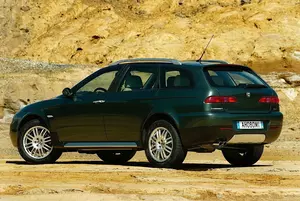
| Vehicle | Curb weight | Difference from world's smallest | Weight to power ratio | 0—60 mph acceleration ratio | Consumption ratio |
|---|---|---|---|---|---|
| 1.9 16V JTD M-Jet |
1510 kg / 3330 lbs |
1085 kg (2393 lbs) heavier | 10 kg to 1 hp | 156 kg/s (344 lbs/s) |
222 kg/L (490 lbs/L) |
| Vehicle | 1.9 16V JTD M-Jet |
|---|---|
| Curb weight |
1510 kg / 3330 lbs |
| Difference from world's smallest | 1085 kg (1085 lbs) heavier |
| Weight to power ratio | 10 kg to 1 hp |
| 0—60 mph acceleration ratio | 156 kg/s (344 lbs/s) |
| Consumption ratio |
222 kg/L (490 lbs/L) |
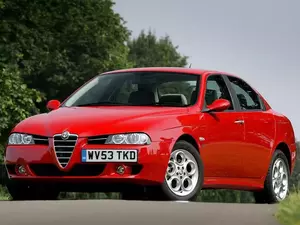
| Vehicle | Curb weight | Difference from world's smallest | Weight to power ratio | 0—60 mph acceleration ratio | Consumption ratio |
|---|---|---|---|---|---|
| 1.6 i 16V T.Spark |
1265 kg / 2789 lbs |
840 kg (1852 lbs) heavier | 11 kg to 1 hp | 127 kg/s (280 lbs/s) |
154 kg/L (340 lbs/L) |
| 1.9 16V JTD |
1305 kg / 2878 lbs |
880 kg (1941 lbs) heavier | 9 kg to 1 hp | 148 kg/s (326 lbs/s) |
221 kg/L (487 lbs/L) |
| 1.9 JTD |
1305 kg / 2878 lbs |
880 kg (1941 lbs) heavier | 11 kg to 1 hp | 133 kg/s (293 lbs/s) |
225 kg/L (496 lbs/L) |
| 2.0 i 16V JTS |
1285 kg / 2833 lbs |
860 kg (1896 lbs) heavier | 8 kg to 1 hp | 165 kg/s (364 lbs/s) |
149 kg/L (329 lbs/L) |
| 1.8 i 16V T.Spark |
1265 kg / 2789 lbs |
840 kg (1852 lbs) heavier | 9 kg to 1 hp | 142 kg/s (313 lbs/s) |
149 kg/L (329 lbs/L) |
| 2.4 JTD |
1385 kg / 3054 lbs |
960 kg (2117 lbs) heavier | 8 kg to 1 hp | 175 kg/s (386 lbs/s) |
210 kg/L (463 lbs/L) |
| 2.5 i V6 24V |
1405 kg / 3098 lbs |
980 kg (2161 lbs) heavier | 7 kg to 1 hp | 204 kg/s (450 lbs/s) |
119 kg/L (262 lbs/L) |
| 2.5 i V6 24V Q-System |
1405 kg / 3098 lbs |
980 kg (2161 lbs) heavier | 7 kg to 1 hp | 173 kg/s (381 lbs/s) |
118 kg/L (260 lbs/L) |
| Vehicle | 1.6 i 16V T.Spark |
|---|---|
| Curb weight |
1265 kg / 2789 lbs |
| Difference from world's smallest | 840 kg (840 lbs) heavier |
| Weight to power ratio | 11 kg to 1 hp |
| 0—60 mph acceleration ratio | 127 kg/s (280 lbs/s) |
| Consumption ratio |
154 kg/L (340 lbs/L) |
| Vehicle | 1.9 16V JTD |
| Curb weight |
1305 kg / 2878 lbs |
| Difference from world's smallest | 880 kg (880 lbs) heavier |
| Weight to power ratio | 9 kg to 1 hp |
| 0—60 mph acceleration ratio | 148 kg/s (326 lbs/s) |
| Consumption ratio |
221 kg/L (487 lbs/L) |
| Vehicle | 1.9 JTD |
| Curb weight |
1305 kg / 2878 lbs |
| Difference from world's smallest | 880 kg (880 lbs) heavier |
| Weight to power ratio | 11 kg to 1 hp |
| 0—60 mph acceleration ratio | 133 kg/s (293 lbs/s) |
| Consumption ratio |
225 kg/L (496 lbs/L) |
| Vehicle | 2.0 i 16V JTS |
| Curb weight |
1285 kg / 2833 lbs |
| Difference from world's smallest | 860 kg (860 lbs) heavier |
| Weight to power ratio | 8 kg to 1 hp |
| 0—60 mph acceleration ratio | 165 kg/s (364 lbs/s) |
| Consumption ratio |
149 kg/L (329 lbs/L) |
| Vehicle | 1.8 i 16V T.Spark |
| Curb weight |
1265 kg / 2789 lbs |
| Difference from world's smallest | 840 kg (840 lbs) heavier |
| Weight to power ratio | 9 kg to 1 hp |
| 0—60 mph acceleration ratio | 142 kg/s (313 lbs/s) |
| Consumption ratio |
149 kg/L (329 lbs/L) |
| Vehicle | 2.4 JTD |
| Curb weight |
1385 kg / 3054 lbs |
| Difference from world's smallest | 960 kg (960 lbs) heavier |
| Weight to power ratio | 8 kg to 1 hp |
| 0—60 mph acceleration ratio | 175 kg/s (386 lbs/s) |
| Consumption ratio |
210 kg/L (463 lbs/L) |
| Vehicle | 2.5 i V6 24V |
| Curb weight |
1405 kg / 3098 lbs |
| Difference from world's smallest | 980 kg (980 lbs) heavier |
| Weight to power ratio | 7 kg to 1 hp |
| 0—60 mph acceleration ratio | 204 kg/s (450 lbs/s) |
| Consumption ratio |
119 kg/L (262 lbs/L) |
| Vehicle | 2.5 i V6 24V Q-System |
| Curb weight |
1405 kg / 3098 lbs |
| Difference from world's smallest | 980 kg (980 lbs) heavier |
| Weight to power ratio | 7 kg to 1 hp |
| 0—60 mph acceleration ratio | 173 kg/s (381 lbs/s) |
| Consumption ratio |
118 kg/L (260 lbs/L) |

| Vehicle | Curb weight | Difference from world's smallest | Weight to power ratio | 0—60 mph acceleration ratio | Consumption ratio |
|---|---|---|---|---|---|
| 1.6 i 16V T.Spark |
1315 kg / 2900 lbs |
890 kg (1963 lbs) heavier | 11 kg to 1 hp | 120 kg/s (265 lbs/s) |
158 kg/L (348 lbs/L) |
| 1.8 i 16V T.Spark |
1315 kg / 2900 lbs |
890 kg (1963 lbs) heavier | 9 kg to 1 hp | 143 kg/s (315 lbs/s) |
153 kg/L (337 lbs/L) |
| 1.9 16V JTD |
1355 kg / 2988 lbs |
930 kg (2051 lbs) heavier | 10 kg to 1 hp | 147 kg/s (324 lbs/s) |
222 kg/L (490 lbs/L) |
| 1.9 JTD |
1355 kg / 2988 lbs |
930 kg (2051 lbs) heavier | 12 kg to 1 hp | 133 kg/s (293 lbs/s) |
226 kg/L (498 lbs/L) |
| 2.4 JTD |
1435 kg / 3164 lbs |
1010 kg (2227 lbs) heavier | 8 kg to 1 hp | 175 kg/s (386 lbs/s) |
214 kg/L (472 lbs/L) |
| 2.5 i V6 24V |
1405 kg / 3098 lbs |
980 kg (2161 lbs) heavier | 7 kg to 1 hp | 204 kg/s (450 lbs/s) |
119 kg/L (262 lbs/L) |
| 2.0 i 16V JTS |
1335 kg / 2944 lbs |
910 kg (2007 lbs) heavier | 8 kg to 1 hp | 171 kg/s (377 lbs/s) |
150 kg/L (331 lbs/L) |
| 2.5 i V6 24V Q-System |
1435 kg / 3164 lbs |
1010 kg (2227 lbs) heavier | 7 kg to 1 hp | 177 kg/s (390 lbs/s) |
121 kg/L (267 lbs/L) |
| Vehicle | 1.6 i 16V T.Spark |
|---|---|
| Curb weight |
1315 kg / 2900 lbs |
| Difference from world's smallest | 890 kg (890 lbs) heavier |
| Weight to power ratio | 11 kg to 1 hp |
| 0—60 mph acceleration ratio | 120 kg/s (265 lbs/s) |
| Consumption ratio |
158 kg/L (348 lbs/L) |
| Vehicle | 1.8 i 16V T.Spark |
| Curb weight |
1315 kg / 2900 lbs |
| Difference from world's smallest | 890 kg (890 lbs) heavier |
| Weight to power ratio | 9 kg to 1 hp |
| 0—60 mph acceleration ratio | 143 kg/s (315 lbs/s) |
| Consumption ratio |
153 kg/L (337 lbs/L) |
| Vehicle | 1.9 16V JTD |
| Curb weight |
1355 kg / 2988 lbs |
| Difference from world's smallest | 930 kg (930 lbs) heavier |
| Weight to power ratio | 10 kg to 1 hp |
| 0—60 mph acceleration ratio | 147 kg/s (324 lbs/s) |
| Consumption ratio |
222 kg/L (490 lbs/L) |
| Vehicle | 1.9 JTD |
| Curb weight |
1355 kg / 2988 lbs |
| Difference from world's smallest | 930 kg (930 lbs) heavier |
| Weight to power ratio | 12 kg to 1 hp |
| 0—60 mph acceleration ratio | 133 kg/s (293 lbs/s) |
| Consumption ratio |
226 kg/L (498 lbs/L) |
| Vehicle | 2.4 JTD |
| Curb weight |
1435 kg / 3164 lbs |
| Difference from world's smallest | 1010 kg (1010 lbs) heavier |
| Weight to power ratio | 8 kg to 1 hp |
| 0—60 mph acceleration ratio | 175 kg/s (386 lbs/s) |
| Consumption ratio |
214 kg/L (472 lbs/L) |
| Vehicle | 2.5 i V6 24V |
| Curb weight |
1405 kg / 3098 lbs |
| Difference from world's smallest | 980 kg (980 lbs) heavier |
| Weight to power ratio | 7 kg to 1 hp |
| 0—60 mph acceleration ratio | 204 kg/s (450 lbs/s) |
| Consumption ratio |
119 kg/L (262 lbs/L) |
| Vehicle | 2.0 i 16V JTS |
| Curb weight |
1335 kg / 2944 lbs |
| Difference from world's smallest | 910 kg (910 lbs) heavier |
| Weight to power ratio | 8 kg to 1 hp |
| 0—60 mph acceleration ratio | 171 kg/s (377 lbs/s) |
| Consumption ratio |
150 kg/L (331 lbs/L) |
| Vehicle | 2.5 i V6 24V Q-System |
| Curb weight |
1435 kg / 3164 lbs |
| Difference from world's smallest | 1010 kg (1010 lbs) heavier |
| Weight to power ratio | 7 kg to 1 hp |
| 0—60 mph acceleration ratio | 177 kg/s (390 lbs/s) |
| Consumption ratio |
121 kg/L (267 lbs/L) |
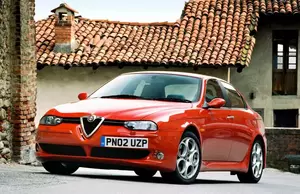
| Vehicle | Curb weight | Difference from world's smallest | Weight to power ratio | 0—60 mph acceleration ratio | Consumption ratio |
|---|---|---|---|---|---|
| 3.2 i V6 24V |
1410 kg / 3109 lbs |
985 kg (2172 lbs) heavier | 6 kg to 1 hp | 235 kg/s (518 lbs/s) |
117 kg/L (258 lbs/L) |
| Vehicle | 3.2 i V6 24V |
|---|---|
| Curb weight |
1410 kg / 3109 lbs |
| Difference from world's smallest | 985 kg (985 lbs) heavier |
| Weight to power ratio | 6 kg to 1 hp |
| 0—60 mph acceleration ratio | 235 kg/s (518 lbs/s) |
| Consumption ratio |
117 kg/L (258 lbs/L) |
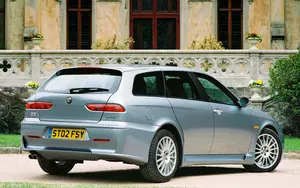
| Vehicle | Curb weight | Difference from world's smallest | Weight to power ratio | 0—60 mph acceleration ratio | Consumption ratio |
|---|---|---|---|---|---|
| 3.2 i V6 24V |
1460 kg / 3219 lbs |
1035 kg (2282 lbs) heavier | 6 kg to 1 hp | 243 kg/s (536 lbs/s) |
121 kg/L (267 lbs/L) |
| Vehicle | 3.2 i V6 24V |
|---|---|
| Curb weight |
1460 kg / 3219 lbs |
| Difference from world's smallest | 1035 kg (1035 lbs) heavier |
| Weight to power ratio | 6 kg to 1 hp |
| 0—60 mph acceleration ratio | 243 kg/s (536 lbs/s) |
| Consumption ratio |
121 kg/L (267 lbs/L) |
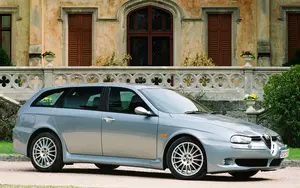
| Vehicle | Curb weight | Difference from world's smallest | Weight to power ratio | 0—60 mph acceleration ratio | Consumption ratio |
|---|---|---|---|---|---|
| 2.5 i V6 24V |
1370 kg / 3021 lbs |
945 kg (2084 lbs) heavier | 7 kg to 1 hp | 196 kg/s (432 lbs/s) | - |
| 1.8 16V T.S. |
1280 kg / 2822 lbs |
855 kg (1885 lbs) heavier | 9 kg to 1 hp | 141 kg/s (311 lbs/s) | - |
| 1.9 JTD |
1320 kg / 2911 lbs |
895 kg (1974 lbs) heavier | 13 kg to 1 hp | 127 kg/s (280 lbs/s) | - |
| 1.6 16V T.S. |
1280 kg / 2822 lbs |
855 kg (1885 lbs) heavier | 11 kg to 1 hp | 122 kg/s (269 lbs/s) | - |
| 2.0 JTS |
1335 kg / 2944 lbs |
910 kg (2007 lbs) heavier | 8 kg to 1 hp | 169 kg/s (373 lbs/s) | - |
| 2.0 i 16V T.Spark |
1300 kg / 2867 lbs |
875 kg (1930 lbs) heavier | 8 kg to 1 hp | 155 kg/s (342 lbs/s) | - |
| 2.4 JTD |
1435 kg / 3164 lbs |
1010 kg (2227 lbs) heavier | 10 kg to 1 hp | 161 kg/s (355 lbs/s) | - |
| 2.5 V6 24V Q-system |
1400 kg / 3087 lbs |
975 kg (2150 lbs) heavier | 7 kg to 1 hp | 173 kg/s (381 lbs/s) | - |
| Vehicle | 2.5 i V6 24V |
|---|---|
| Curb weight |
1370 kg / 3021 lbs |
| Difference from world's smallest | 945 kg (945 lbs) heavier |
| Weight to power ratio | 7 kg to 1 hp |
| 0—60 mph acceleration ratio | 196 kg/s (432 lbs/s) |
| Consumption ratio | - |
| Vehicle | 1.8 16V T.S. |
| Curb weight |
1280 kg / 2822 lbs |
| Difference from world's smallest | 855 kg (855 lbs) heavier |
| Weight to power ratio | 9 kg to 1 hp |
| 0—60 mph acceleration ratio | 141 kg/s (311 lbs/s) |
| Consumption ratio | - |
| Vehicle | 1.9 JTD |
| Curb weight |
1320 kg / 2911 lbs |
| Difference from world's smallest | 895 kg (895 lbs) heavier |
| Weight to power ratio | 13 kg to 1 hp |
| 0—60 mph acceleration ratio | 127 kg/s (280 lbs/s) |
| Consumption ratio | - |
| Vehicle | 1.6 16V T.S. |
| Curb weight |
1280 kg / 2822 lbs |
| Difference from world's smallest | 855 kg (855 lbs) heavier |
| Weight to power ratio | 11 kg to 1 hp |
| 0—60 mph acceleration ratio | 122 kg/s (269 lbs/s) |
| Consumption ratio | - |
| Vehicle | 2.0 JTS |
| Curb weight |
1335 kg / 2944 lbs |
| Difference from world's smallest | 910 kg (910 lbs) heavier |
| Weight to power ratio | 8 kg to 1 hp |
| 0—60 mph acceleration ratio | 169 kg/s (373 lbs/s) |
| Consumption ratio | - |
| Vehicle | 2.0 i 16V T.Spark |
| Curb weight |
1300 kg / 2867 lbs |
| Difference from world's smallest | 875 kg (875 lbs) heavier |
| Weight to power ratio | 8 kg to 1 hp |
| 0—60 mph acceleration ratio | 155 kg/s (342 lbs/s) |
| Consumption ratio | - |
| Vehicle | 2.4 JTD |
| Curb weight |
1435 kg / 3164 lbs |
| Difference from world's smallest | 1010 kg (1010 lbs) heavier |
| Weight to power ratio | 10 kg to 1 hp |
| 0—60 mph acceleration ratio | 161 kg/s (355 lbs/s) |
| Consumption ratio | - |
| Vehicle | 2.5 V6 24V Q-system |
| Curb weight |
1400 kg / 3087 lbs |
| Difference from world's smallest | 975 kg (975 lbs) heavier |
| Weight to power ratio | 7 kg to 1 hp |
| 0—60 mph acceleration ratio | 173 kg/s (381 lbs/s) |
| Consumption ratio | - |
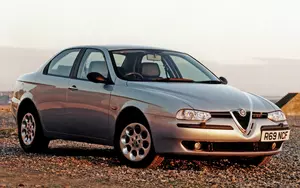
| Vehicle | Curb weight | Difference from world's smallest | Weight to power ratio | 0—60 mph acceleration ratio | Consumption ratio |
|---|---|---|---|---|---|
| 2.5 i V6 24V |
1320 kg / 2911 lbs |
895 kg (1974 lbs) heavier | 7 kg to 1 hp | 183 kg/s (404 lbs/s) |
115 kg/L (254 lbs/L) |
| 1.6 16V T.S. |
1230 kg / 2712 lbs |
805 kg (1775 lbs) heavier | 10 kg to 1 hp | 123 kg/s (271 lbs/s) | - |
| 1.8 16V T.S. |
1230 kg / 2712 lbs |
805 kg (1775 lbs) heavier | 9 kg to 1 hp | 140 kg/s (309 lbs/s) | - |
| 1.9 JTD |
1305 kg / 2878 lbs |
880 kg (1941 lbs) heavier | 11 kg to 1 hp | 133 kg/s (293 lbs/s) | - |
| 2.0 i 16V T.Spark |
1250 kg / 2756 lbs |
825 kg (1819 lbs) heavier | 8 kg to 1 hp | 152 kg/s (335 lbs/s) | - |
| 2.0 JTS |
1285 kg / 2833 lbs |
860 kg (1896 lbs) heavier | 8 kg to 1 hp | 165 kg/s (364 lbs/s) | - |
| 2.4 JTD |
1385 kg / 3054 lbs |
960 kg (2117 lbs) heavier | 9 kg to 1 hp | 156 kg/s (344 lbs/s) | - |
| 2.5 V6 24V Q-system |
1350 kg / 2977 lbs |
925 kg (2040 lbs) heavier | 7 kg to 1 hp | 167 kg/s (368 lbs/s) | - |
| Vehicle | 2.5 i V6 24V |
|---|---|
| Curb weight |
1320 kg / 2911 lbs |
| Difference from world's smallest | 895 kg (895 lbs) heavier |
| Weight to power ratio | 7 kg to 1 hp |
| 0—60 mph acceleration ratio | 183 kg/s (404 lbs/s) |
| Consumption ratio |
115 kg/L (254 lbs/L) |
| Vehicle | 1.6 16V T.S. |
| Curb weight |
1230 kg / 2712 lbs |
| Difference from world's smallest | 805 kg (805 lbs) heavier |
| Weight to power ratio | 10 kg to 1 hp |
| 0—60 mph acceleration ratio | 123 kg/s (271 lbs/s) |
| Consumption ratio | - |
| Vehicle | 1.8 16V T.S. |
| Curb weight |
1230 kg / 2712 lbs |
| Difference from world's smallest | 805 kg (805 lbs) heavier |
| Weight to power ratio | 9 kg to 1 hp |
| 0—60 mph acceleration ratio | 140 kg/s (309 lbs/s) |
| Consumption ratio | - |
| Vehicle | 1.9 JTD |
| Curb weight |
1305 kg / 2878 lbs |
| Difference from world's smallest | 880 kg (880 lbs) heavier |
| Weight to power ratio | 11 kg to 1 hp |
| 0—60 mph acceleration ratio | 133 kg/s (293 lbs/s) |
| Consumption ratio | - |
| Vehicle | 2.0 i 16V T.Spark |
| Curb weight |
1250 kg / 2756 lbs |
| Difference from world's smallest | 825 kg (825 lbs) heavier |
| Weight to power ratio | 8 kg to 1 hp |
| 0—60 mph acceleration ratio | 152 kg/s (335 lbs/s) |
| Consumption ratio | - |
| Vehicle | 2.0 JTS |
| Curb weight |
1285 kg / 2833 lbs |
| Difference from world's smallest | 860 kg (860 lbs) heavier |
| Weight to power ratio | 8 kg to 1 hp |
| 0—60 mph acceleration ratio | 165 kg/s (364 lbs/s) |
| Consumption ratio | - |
| Vehicle | 2.4 JTD |
| Curb weight |
1385 kg / 3054 lbs |
| Difference from world's smallest | 960 kg (960 lbs) heavier |
| Weight to power ratio | 9 kg to 1 hp |
| 0—60 mph acceleration ratio | 156 kg/s (344 lbs/s) |
| Consumption ratio | - |
| Vehicle | 2.5 V6 24V Q-system |
| Curb weight |
1350 kg / 2977 lbs |
| Difference from world's smallest | 925 kg (925 lbs) heavier |
| Weight to power ratio | 7 kg to 1 hp |
| 0—60 mph acceleration ratio | 167 kg/s (368 lbs/s) |
| Consumption ratio | - |